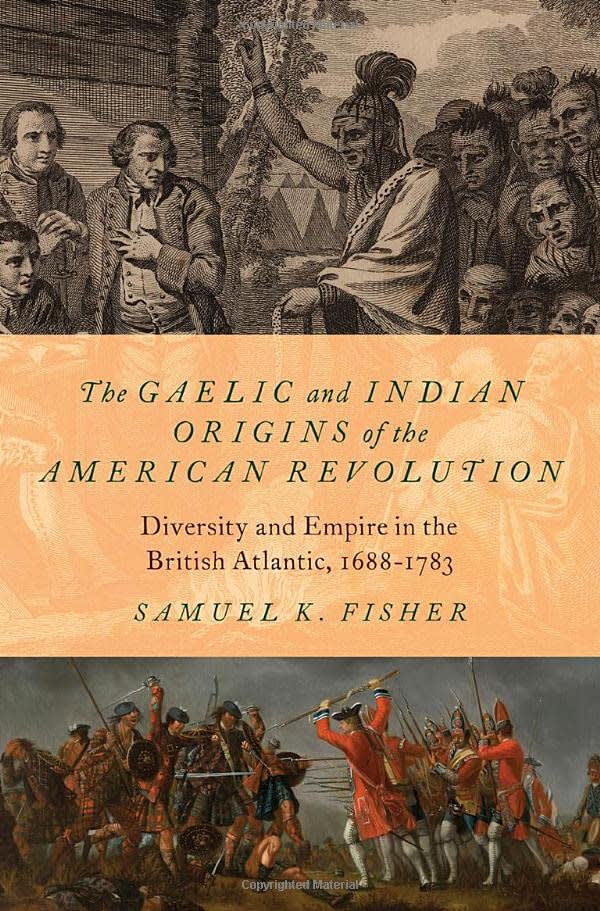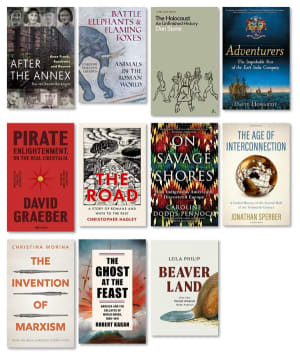We hold these truths to be self evident; that all men are created equal; that they are endowed by their Creator with certain inalienable rights; that these are life, liberty and the pursuit of happiness; that to secure these rights governments are instituted among men, deriving their just powers from the consent of the governed.
The unanimous Declaration of the thirteen united States of America
These words - the preamble to the declaration of independence of the American colonies of Britain in 1776 - still stir the soul, touch the heart, and fiddle with the emotions. It is amazing that a political statement drafted over 200 years ago can still speak to us so powerfully and so directly.
Tone deaf
But are we hearing it right? Samuel K Fisher argues in The Gaelic and Indian Origins of the American Revolution that we fundamentally misunderstand what the founding fathers meant by liberty, by consent, and by the pursuit of happiness.
This is why it seems like such a contradiction to us, but was perfectly acceptable to them, to exclude enslaved Africans and African Americans from their definition of all men. This is why liberty was something to be enjoyed by European settlers but not at all by the American peoples who they were driving off their land. This is why the pursuit of their happiness required the unhappiness of others.
Of our people, by our people, for our people
In the same way that an ancient Athenian democrat would be appalled that poor people and women are now allowed to vote, an early American republican would be aghast to know that the interests of native American peoples or enslaved people would now be considered equal to the interests of previously European settlers. Indeed - according to Fisher - the Revolution was all about preserving the right to boss around these ‘outsider’ groups. A sort of anti-diversity movement of the time.
His central argument is that rather than the American Revolution looking forward to a glorious new future, it was instead conservative and looking backwards to the Glorious Revolution of 1688 which booted out King James II, that other well known tyrant. Just as James II had threatened the rights of freeborn Englishmen with Catholic tyranny, so was George III intent on using hordes of Gaelic Catholics soldiers (and American Indians) to control the American colonies.
The long view
The long view of the American Revolution is one of the ebb and flow of imperial power in North America - in the context of different interest groups across the British empire, who were all grappling with similar issues but in different ways.
Diplomacy or conspiracy?
So the context in which it became possible to imagine American independence, was one where the British crown was seeking friendship with native American groups - and native American peoples were actively seeking the protection of the King from the rapacity of his colonists. From the king’s perspective, the cost of diplomacy was much more palatable than the cost of an Indian war. Colonists itching to get their hands on native American land were just selfish troublemakers from this point of view.
But from the colonists’ perspective, the King was siding with their natural enemy - and doing so with the intention not of saving a few pounds, but of using these bloodthirsty savages to menace and control them.
What’s more this was part of a global conspiracy involving Scottish (Catholic) highlanders and a potential army of Irish (Catholic) peasants - fit instruments for George III to enforce his tyrannical designs across the empire.
Being a member of such an empire therefore meant that your liberty was at risk. And the immediate instruments that were being used to threaten your liberty were native Americans. Therefore liberty for the colonists meant - at least for some - being given a free hand to raise the iron fist.
Difference of opinion
Different people in the empire responded to these attempts by the British crown to maintain its control over the empire in different ways. Fisher contrasts the American experience with that of Ireland - which reluctantly remained part of the empire, with the occasional insurrection - and Highland Scotland - which came to enthusiastically embrace the imperial project, with trips down to London and opportunities for overseas travel.
By taking a long view of over a hundred years, and a relatively broad view across Scotland, Ireland and America, Fisher is able to describe American independence as a historical process. This is in contrast to the typical ‘zoomed in’ view that is usually adopted - where larger than life characters play an outsized role.
Painting the backdrop
This isn’t to say that individuals are not important - people are the stuff of history after all - but Fisher does a great job of describing the waters in which they find themselves swimming. It is the water that allows the Washingtons, the Adamses and the Jeffersons to float to the top, rather than simply living out their pleasant lives on their country estates.
What is it like to read?
While the topic of the book is fascinating and the arguments convincingly made, most of the book feels like a heavy going slog. Fisher has split the work into four parts, taking us chronologically from the late 17th Century to the late 18th Century. Each part covers Ireland, Scotland and the Native North American peoples in turn, with a focus on their respective feelings for (or more usually against) the English, and from 1707 British, King.
But although there is a clear framework to the book and a recurring theme of “Exclusionary” vs “Inclusive” empire, there is not really a narrative thread to pull it all together. And although Fisher’s scholarship across different nationalities is very impressive, he doesn’t really “hold your hand” as he takes you through the material. His concern is with getting the evidence on the page, not helping the ordinary punter digest it all.
The tone of the book remains dispassionate throughout - which I guess is deliberate for a scholar taking a potentially provocative stance on a contentious subject.
The good bits
The exception to this downbeat view is the introduction and epilogue which are both great to read! Maybe the author wrote them after he had finally finished writing the main body of the book and was feeling a bit more upbeat? Whatever the reason, they clearly and concisely set out the situation at the time, his own arguments, and why it all still matters. The epilogue also looks further forward and makes some interesting connections between the American Revolution and the Civil War:
This one pitted Southerners motivated by the deeply held conviction that their government sought to promote the cause of a marginalised people (enslaved African Americans) against Union loyalists prepared to accept more inclusive visions of the American future and to deny the justice of seceding from a duly constituted sovereign. Those positions would have seemed quite familiar to the revolutionaries and their imperial opponents...
If the Civil War was a re-enactment of the American Revolution, Lincoln was playing George III.Samual K Fisher, The Gaelic and Indian Origins of the American Revolution
If you are interested in the topic but are daunted by the text, I would encourage you to download the Kindle sample, read the intro and see what you think. If you are feeling rich or generous you could even buy the whole thing but read just the intro and epilogue. The main body of the book can be kept in reserve for occasional toe dipping or reference needs.
Conclusion
This book encourages us to take a wider view of how the North American colonies of Britain became an independent nation in 1776. The author provides an important counterweight to the many other history books which quickly zoom into the cannon smoke and musketry.
However, this knowledge comes at a price. Because the truths contained therein are not self-evident, we have a hard slow-going slog through the supporting case. The exception is the beautifully drafted introductory preamble and closing epilogue.
Book details
(back to top)- Title -
The Gaelic and Indian Origins of the American Revolution : Diversity and Empire in the British Atlantic, 1688-1783
- Author -
Samuel K Fisher
- Publication date -
September 2022
- Publisher -
Oxford University Press
- Pages -
263
- ISBN 13 -
978-0197555842
- Amazon UK -
- Amazon US -



